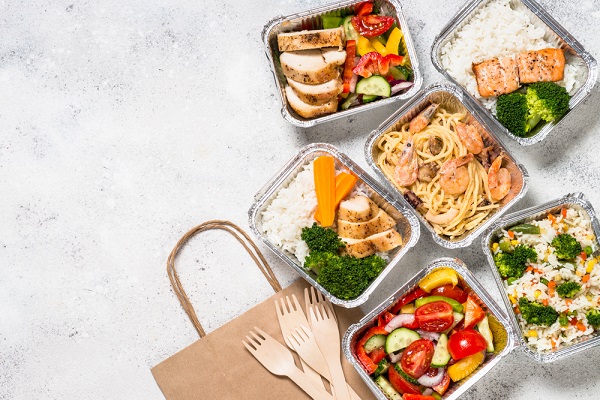4 Ways Restaurants Are Branching Out to Ensure Survival

By: Olivia Overman
As the coronavirus pandemic continues, restaurateurs have had to dramatically change their business models to ensure survival. While dealing with hardening rates for traditional exposures that began before the pandemic, restaurant owners are now also dealing with a completely new playbook—one that brings a whole new set of risks with it, but will hopefully ensure their survival.
U.S. diners spent almost $27 billion in 2019 ordering food for delivery by app, website or text message, according to the NPD Group. While online delivery is still a small slice of the $800 billion restaurant industry, it’s growing fast.
“Restaurants that were able to adapt their business models to the realities of the pandemic and provide outdoor seating, efficient customer carry-out, and delivery services have been able to weather the downturn more effectively,” says Mike Halvey, vice president, commercial lines underwriting and product, Nationwide.
However, with these operational changes come new risks that are critical for restaurateurs to be mindful of. Here are four ways the food service industry is adapting and what that means for independent insurance agents:
1) Delivery. More restaurants are delivering now than a year ago. Many restaurants have partnered with a third party, such as DoorDash, Grubhub and Uber Eats, to make deliveries. For those that have taken the plunge, it’s important they consult their agents to ensure they have the right coverage for this new risk.
Agents need to be proactive in identifying any underwriting restrictions or coverage exclusions that may be in place. Knowing “what kind of contractual relationship your restaurant has with the vendor delivering food to your customers is important to avoid getting burned,” says Bonnie Steen, vice president, associate managing director, Burns & Wilcox.
A hired non-owned auto or business auto policy is essential for restaurants that are allowing employees to drive their own or company vehicles to make deliveries. Understand any underwriting restrictions, like limits on the delivery radius, before starting deliveries. “Carriers are offering flexible options for this line of coverage, which restaurants have not typically been concerned with,” says Crystal Jacobs, vice president & program director, Restaurant Guard.
“We’re also seeing many states temporarily ease liquor license restrictions to allow restaurants to deliver alcohol. This is a great revenue-driving opportunity, but it does require enhanced controls,” says Brian Gerritsen, senior director, IndustryEdge, Travelers. “For instance, requiring delivery drivers to obtain a Training for Intervention ProcedureS (TIPS) certification or complete another liquor liability training program and verifying that the person they’re delivering to is at least 21 years old are best practices.”
Restaurateurs need “to consult with their agents or broker to ensure they have the right coverage in place for these operations and are implementing sound risk management techniques for driver selection and training,” Gerritsen says.
2) Technology. The impact of COVID-19 has only accelerated the shift toward digital. By introducing online ordering or creating ordering apps, some restaurants have introduced themselves to a risk they may not have been open to previously.
A cyber liability policy is key to covering this exposure particularly since it is “very hard in today’s media world to survive the public side of a bad review,” Steen says.
3) General and excess liability insurance. “Having adequate liability limits has become more critical than ever as coverage amounts that were adequate five years ago are not likely to be sufficient today,” Gerritsen says. This is particularly relevant now that restaurant owners are having to manage a team of delivery workers to ensure they remain in business.
“Awareness of how the landscape has changed and finding enough excess liability limits is critical for restaurateurs to protect their assets and reputation,” Gerritsen adds. “Working with agents that are staying on top of all the changes that are taking place across the industry currently can help restaurateurs navigate through these rough waters.”
4) Ghost kitchens. A different type of restaurant that is set up solely for delivery, these ghost or virtual kitchens do not have waiters or customers in the facility but to-go boxes that are ready for delivery drivers. “Operating more like catering kitchens, these didn’t exist three to four years ago,” Gerritsen says. “While there are no seats and no guests on the premises, there are still risks, like security and sanitation concerns, especially if sharing the space with other operators, which can sometimes be the case.”
As restaurants adapt and innovate, talking to their agent or broker about potential changes in business operations will help them avoid potential costly coverage gaps. “Most carriers are limiting what they are writing when it comes to restaurants and finding coverage with a solid carrier is extremely difficult,” says Jacobs.
These operational changes may be considered a fundamental shift in direction for the restaurant industry but for full-service restaurants innovation, flexibility and risk awareness could help see them through.
Olivia Overman is IA content editor.










